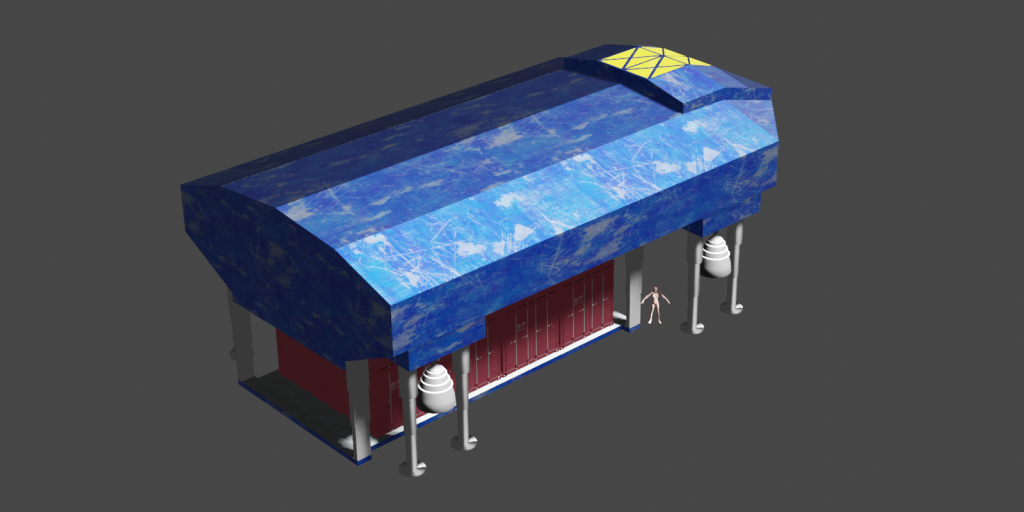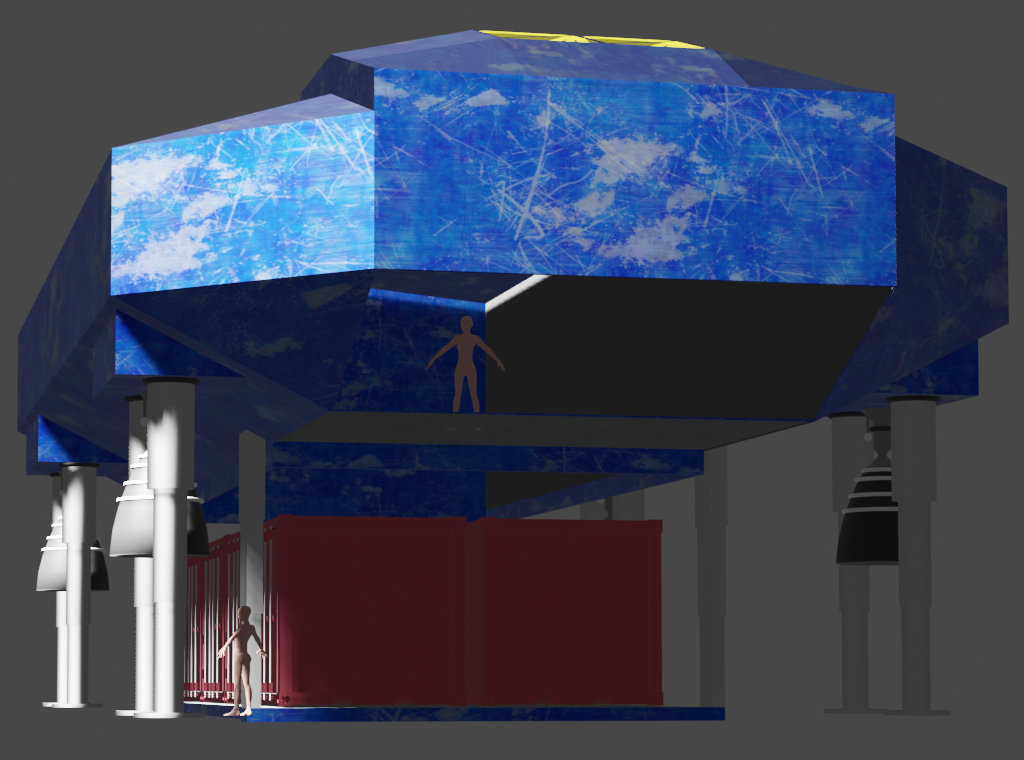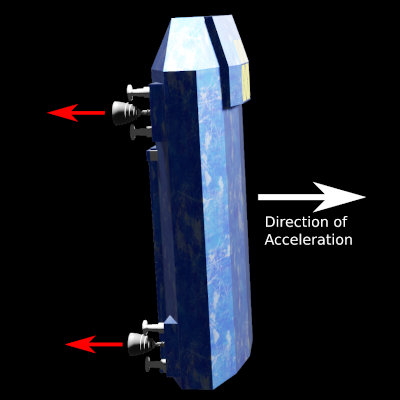The Dove

The Dove class transport is a TL 10 shuttle designed to ferry cargo between small moons, generally staying within the orbit of a single major planetary body. It is not designed for week-long journeys between major worlds.
I’m trying to put together a collection of starship designs for use in a Traveller-like RPG setting, though since a lot of them so far are pre-Jump technology, they would probably work for an Eclipse Phase or similar near-future environment. As always, the Blender models are available in my GitLab project under a free license (MIT, though I’m thinking of switching to CC0 since that tends to be more popular in the art world and I’m making heavy use of CC0 licensed textures).
My process for designing these is to use Blender to get a rough idea of what the ships look like. I’m not an artist, and I’ve only started to learn to use Blender last year, so the graphical models are very rough. I also have some technology rules for my own RPG system which detail the performance of the sort of rocket engines which are available.
Note that I’m not aiming for hard science fiction complete accuracy, but instead something vaguely plausible which is internally consistent and which allows relatively easy space travel for a Sci-Fi setting.
For the Dove, the basic shape was inspired by the Transporter from classic Elite, though the practicalities of actual physics has caused some differences. The name comes from the fact that the fictional future-history company I use as the main manufacturer, Black Sky Industries, uses bird names for all its civilian designs.
Note that I’m using GURPS for technology levels. Modern day is currently TL 8 (1980-2025, or thereabouts). TL 9 is plausible near future – possibly up to 2075, TL 10 is slightly less plausible near future (maybe up until 2150), with Jump (or hyperdrive) technology being invented towards the end of TL 10. There is no anti-grav or other magical technology available, so chemical and nuclear engines are common. TL 10 is pretty much the peak of performance for the sort of chemical engines that the Dove uses.
The Dove is a 75dT (displacement tonnes, or 14m³) hull, with an unloaded dry mas of about 20 tonnes. It has four 2,000 KN thrust liquid Hydrogen-Oxygen engines which provide more than enough thrust for take off from Earth fully loaded. This is overkill, but I’m using stock engines, and four balance out the design.

Specific impulse of the engines is close to theoretical maximum – 520 seconds, which provides a delta-v of just over 10km/s. This is actually enough to get to LEO from Earth, though assumes no cargo.
It’s Rocket Science: Specific Impulse, measured in seconds, is how efficient a rocket engine is. Over 500s is really, really good for a chemical engine (the Space-X Raptor engine gets about 350s in a vacuum, lower in an atmosphere). TL 10 would be two generations on from that, but even so I may end up dropping things a bit.
Delta-v is how fast a rocket can accelerate to from a standing start. So a dV of 10km/s, means it can go from (relative) stationary to 10km/s before running out of fuel. Of course, it then can’t slow itself down. Orbital velocity at Low Earth Orbit (LEO) is about 7km/s, so a rocket getting into orbit from Earth needs at least that, plus a bit more to overcome air resistance and gravity. There’s a nice diagram available which shows how much dV is needed to get between the moons and planets of our solar system.
With 80 tonnes of cargo, loaded mass increases to 228t, which drops delta-v down to 4.3 km/s. That’s enough to get to orbit from the Moon, Mars, Mercury and most moons of the solar system, which is what the Dove is designed to do. I’m still playing around with the actual design, as well as the performance of the engines.
Note, if we used Methalox (Liquid Methane + Oxygen) as a fuel, the fuel density increases considerably, which actually increases delta-v under fully loaded conditions to over 12km/s (even though specific impulse would be lower). This is enough to SSTO from the Earth. However, Methane isn’t commonly available throughout the solar system, so I’ve opted for Hydrogen instead. Note also, that the engines are designed for operating in a vacuum, and would probably implode if used at sea-level.

Due to the positioning of the engines, the Dove flies ‘top first’. This means that the direction of gravity is always towards the belly of the craft. The crew section, which sits above the ‘front’ loading bay, allows the crew to look ‘up’ in the direction of travel. They probably have reclining command seats to make this easier.
The main loading bay is pressurised, but with airlocks between the crew section and the bay. The entire belly will drop down to allow the unloading of cargo, but there will also be a front ramp (not yet included), which will allow easy access when the landing legs are partially retracted.
The design is currently just over 22m long, and 12m wide. The scale figure in the renders (nude, because that’s what I could find that was available under a CC0 license that would import easily) should also give an idea of the size of the Dove.
It is by no means finished. It needs a front landing ramp, I need to figure out how to articulate the landing legs and loading system, it needs manoeuvre thrusters, and could do with some airlocks and ladders inside. There’s probably more fiddling of the engine characteristics and some re-balancing of the fuel tank sizes etc to do as well. But unless I’ve made some major miscalculation in my maths, I think it’s close (ish).
